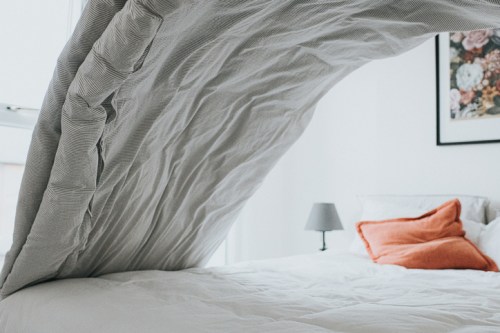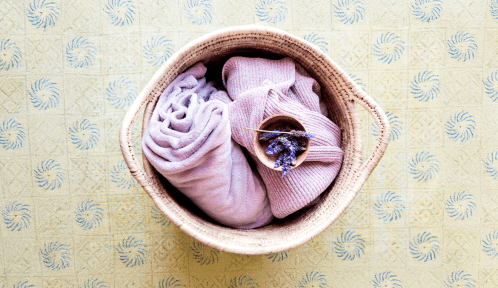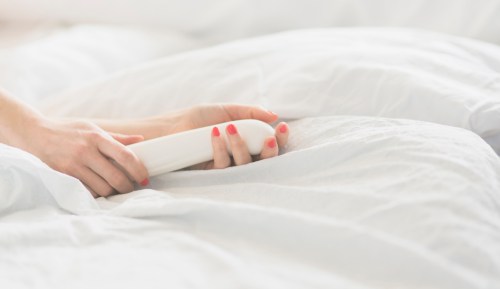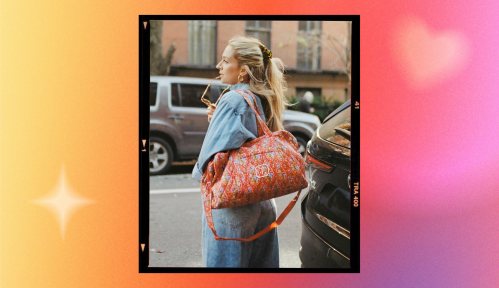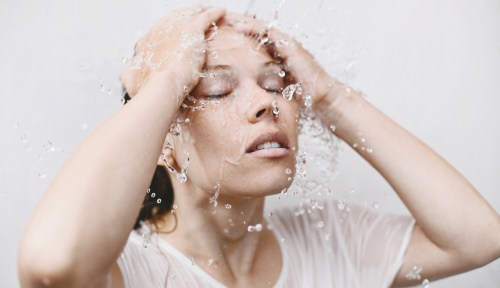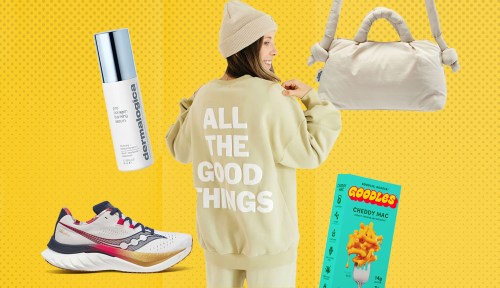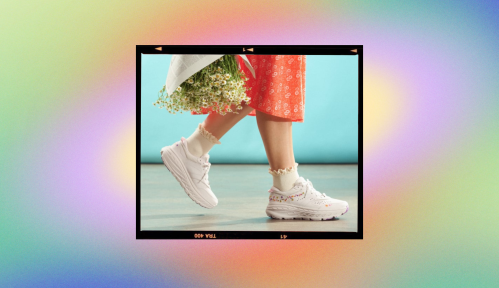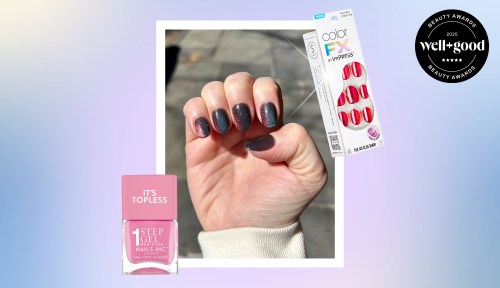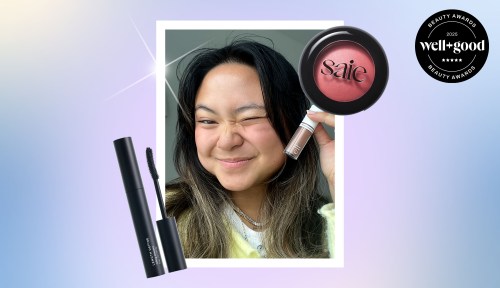Our editors independently select these products. Making a purchase through our links may earn Well+Good a commission
As someone with both PTSD and a lot of musculoskeletal pain, I’m up a lot at night. I always wake several times, and I struggle to fall back asleep. So I’m typically game to try any hack that might help.
When I heard that massage guns can potentially improve the quality of your sleep, I decided to try a “one-week massage gun for sleep challenge.” I’ve had success using a massage gun after exercise to reduce muscle soreness and increase my range of motion, so I figured it didn’t sound crazy that it might also help me sleep better.
The research behind using a massage gun for sleep
Therabody conducted a study that asked 73 healthy participants (ages 18 to 40) to follow the Theragun Recovery and Sleep protocols while wearing a Biostrap wrist sensor to track their quality and quantity of sleep and recovery.
The subjects were followed for five weeks. During the first two, baseline data was collected without using any sort of massage gun. Then, subjects performed the Theragun Recovery and Sleep protocols with the Theragun Elite 30 minutes before bed as well as recovery massage gun protocols immediately after exercise for two weeks. During the final week, they returned to their normal sleep routines without the massage gun.
Results showed that 87 percent of the study participants fell asleep more quickly using the Theragun—4 minutes and 15 seconds faster, on average. Additionally, 70 percent of the participants had fewer wakings during the night.
Maybe most notably, after using the Theragun Elite immediately after exercise and 30 minutes before bed following the Therabody app‘s sleep routine, 100 percent of the subjects reported improvements in their overall quality of life. Who doesn’t want that?
How I used my Theragun for sleep
Of course, I am a case study of one, and this wasn’t some sort of well-controlled scientific study with captured sleep tracking data. But I decided to see how this strategy could work for me, using my Theragun Pro.
Just as I was about to embark on my own test, Therabody announced a partnership with Oura ring to create a sleep massage gun protocol in the Therabody app. Perfect timing.
The Therabody sleep protocol is a fully guided, six-minute routine, targeting areas of the body that tend to have built-up tension, like the neck, lower back, forearms, quads, shins, and feet. Each area gets a 30-second treatment, which feels like just long enough to loosen things up without taking forever to get through the whole-body wind-down. The protocol uses lighter pressure, which is said to activate the parasympathetic nervous system, or the “rest and digest” system, whereas heavy pressure can lead you to be more alert.
Ready to try it out yourself?
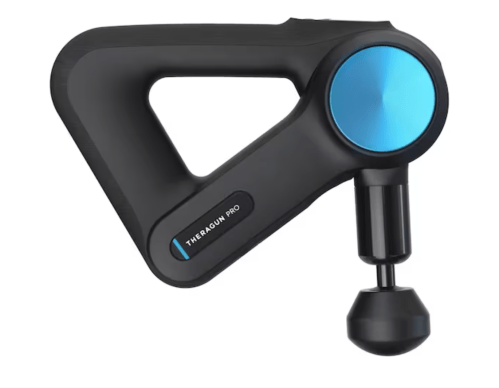
Theragun PRO (5th Gen) — $599.00
What happened when I used a Theragun every night before bed
My normal sleep routine is to go to bed around 9:30 pm and to get out of bed around 5:30 am, so I used the Theragun Pro at 9:00 every night for a week, doing a three-day lead-in without it to establish a baseline. Here are my results (don’t judge me—I wake up a lot!):
Baseline nights
During the baseline three nights, I went to bed at just before 9:30 each night. These are the approximate times I woke up:
- 10/14: 10:30 pm, 11:45 pm, 1:10 am, 3:00 am, 5:30 am
- 10/15: 10:20 pm, 11:40 pm, 1:20 am, 2:25 am, 5:20 am
- 10/16: 10:15 pm, 10:45 pm, 11:20 pm, 2:00 am, 3:10 am, 4:55 am
Night one using the sleep protocol
As someone who is well-acquainted with anatomy, I found the sleep protocol easy to follow, but if you’re less familiar with specific muscle groups, it might be helpful to do a dry run without the massage gun on to watch the app and practice. (As a perfectionist, I was constantly looking at the app to make sure I was pinpointing all the right spots.)
Once it was time to get in bed, I didn’t feel like I fell asleep any faster. Honestly, I think it took about 10 to 15 minutes longer because I seemed keyed up, so I was kind of bummed about that.
However, I only woke up three times in the night! This may not be a victory for the average person, but it was two-plus fewer times for me.
Nights 2 and 3
The second and third nights went better. I was nervous that it would take a long time to fall asleep again, but the opposite occurred. One night, I was out like a light and the other it was about on par with my usual sleep timing. I continued to only wake up three times (yay!).
Notably, I also experienced much less pain at night and woke up feeling less stiff.
Night 4
This was a tough night. I did a hard kettlebell workout during the day and was super achy at bedtime. It was also an emotionally tough day for me and I couldn’t turn off my brain. Even after using the massage gun, I was still lying there restless for over an hour, so I actually caved and took a Tylenol. Thankfully, it took the edge off of my pain and I eventually fell asleep.
Nights 5 through 7
The last three nights, I was like a new person (new sleeper?). I fell asleep quickly, woke up two or three times per night (two awakenings is my personal record now!), and felt less stiff and sore when I got up in the morning.
My takeaway: Did the Theragun help me sleep?
I originally set out just to test this for just a week, and since I’m usually all about simplifying my bedtime routine, I figured I’d stop as soon as the week was over. But now, I might just keep it going.
Although I haven’t been fully convinced that I’m definitely sleeping much better, I am absolutely sure it’s at least helping to relax my mind and it’s certainly relaxing my muscles and easing some of the achiness I usually wrestle with at night.
Next up? I want to try using the Oura ring to take advantage of the unique partnership with the Theragun massage gun sleep protocol. As a numbers girl myself, I’d love to actually track my sleep cycles and sleep quality for a bit more of a quantitative evaluation of the benefits. For now, it seems like I’ve got a new bedtime routine that’s working—and I’m certainly going to run with that!
Sign up for the Well+Good SHOP Newsletter
Get exclusive deals on wellness, beauty, fitness, and food products that have been hand-picked by our editors.
Got it, you've been added to our email list.


